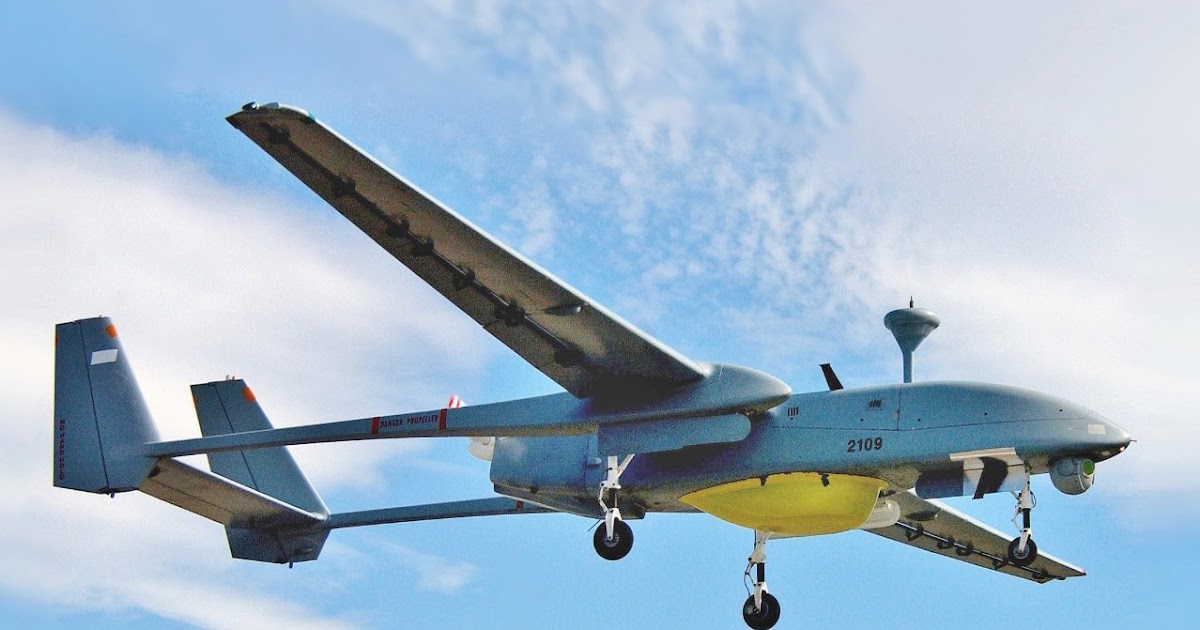
An Israeli Heron drone of the type it supplied to India. Now New Delhi is turning to Tel Aviv for more sophisticated armed drones
By Vikas Gupta
Defence News of India, 28 February 23
The 2020 44-day war between Azerbaijan and Armenia, followed by the Russo-Ukrainian war that has raged for over a year, have both established a winning weapon of modern warfare – the unmanned armed vehicle ( RPV), usually referred to as the armed drone.
Today, the Indian army has started equipping itself with variants of armed drones that could swing battles in its favor on the mountainous Sino-Indian border or in the deserts of Rajasthan, where Indian armored forces face off against tanks. Pakistani.
During the coming week, the army will carry out tests in Pokhran ofan “air targeting system” for artillery direction. It is called PALM 400 – the acronym for “precision attack loitering system” – and is designed to fly over concentrations of armored vehicles, or areas where they are expected. When armored vehicles arrive in this “kill zone”, each PALM 400 chooses its target and fires an armor-penetrating projectile, penetrating it from above, where its armor protection is least.
In mid-February, another PALM RPV passed a series of grueling tests in the extreme altitudes of Sikkim. There the RPV was fired at an altitude of 18,000 feet and, after loitering at 19,500 feet, fired a thermobaric warhead which struck a target 8 kilometers away.
The PALM 400 RPV is launched from a canister and can loiter (stay on station) on a kill zone up to120 minutes flight time at 3,000-4,000 feet above ground. It flies at 50-140 knots (90-260 kilometers per hour), giving it a range of over 100 km.
These capabilities allowed the Army to choose AVision Systems from 21 companies in a global Request for Proposals (RfP). All that remains is for the PALM system to pass its tests in Pokhran.
The PALM 400 claims to be an Indian product, as AVision Systems is a joint venture (JV) between Israeli company UVision Air Ltd and Aditya Precitech Private Ltd (APPL) based in Hyderabad. The Indian company has long been associated with Defense Research & Development (DRDO) in various missile projects.
PALM RPVs use state-of-the-art stabilized electro-opticalinfrared (EOIR) dual cameras to identify and engage targets day or night. Its high-end homing capabilities ensure accurate tracking of static and moving targets. The RPV uses sophisticated navigation methods, which allow it to operate even in environments where the Global Positioning System – the navigation backbone for most missile systems – has been denied to the system.
Testing to date has determined that the PALM 400 design allows for exceptional maneuverability and has an in-flight abort capability that allows automatic reentry to loiter mode, re-engagement, or return to the recovery zone at using a parachute.
In testing, the system demonstrated its ability to hover stealthily over a target, gather intelligence and strike down urgent threats instantly. The PALM 400 is also effective against strategic enemy targets thanks to its customizable warhead designed to handle different types of targets.
The 2020 44-day war between Azerbaijan and Armenia, followed by the Russo-Ukrainian war that has raged for over a year, have both established a winning weapon of modern warfare – the unmanned armed vehicle ( RPV), usually referred to as the armed drone.
Today, the Indian army has started equipping itself with variants of armed drones that could swing battles in its favor on the mountainous Sino-Indian border or in the deserts of Rajasthan, where Indian armored forces face off against tanks. Pakistani.
During the coming week, the army will carry out tests in Pokhran ofan “air targeting system” for artillery direction. It is called PALM 400 – the acronym for “precision attack loitering system” – and is designed to fly over concentrations of armored vehicles, or areas where they are expected. When armored vehicles arrive in this “kill zone”, each PALM 400 chooses its target and fires an armor-penetrating projectile, penetrating it from above, where its armor protection is least.
In mid-February, another PALM RPV passed a series of grueling tests in the extreme altitudes of Sikkim. There the RPV was fired at an altitude of 18,000 feet and, after loitering at 19,500 feet, fired a thermobaric warhead which struck a target 8 kilometers away.
The PALM 400 RPV is launched from a canister and can loiter (stay on station) on a kill zone up to120 minutes flight time at 3,000-4,000 feet above ground. It flies at 50-140 knots (90-260 kilometers per hour), giving it a range of over 100 km.
These capabilities allowed the Army to choose AVision Systems from 21 companies in a global Request for Proposals (RfP). All that remains is for the PALM system to pass its tests in Pokhran.
The PALM 400 claims to be an Indian product, as AVision Systems is a joint venture (JV) between Israeli company UVision Air Ltd and Aditya Precitech Private Ltd (APPL) based in Hyderabad. The Indian company has long been associated with Defense Research & Development (DRDO) in various missile projects.
PALM RPVs use state-of-the-art stabilized electro-opticalinfrared (EOIR) dual cameras to identify and engage targets day or night. Its high-end homing capabilities ensure accurate tracking of static and moving targets. The RPV uses sophisticated navigation methods, which allow it to operate even in environments where the Global Positioning System – the navigation backbone for most missile systems – has been denied to the system.
Testing to date has determined that the PALM 400 design allows for exceptional maneuverability and has an in-flight abort capability that allows automatic reentry to loiter mode, re-engagement, or return to the recovery zone at using a parachute.
In testing, the system demonstrated its ability to hover stealthily over a target, gather intelligence and strike down urgent threats instantly. The PALM 400 is also effective against strategic enemy targets thanks to its customizable warhead designed to handle different types of targets.






